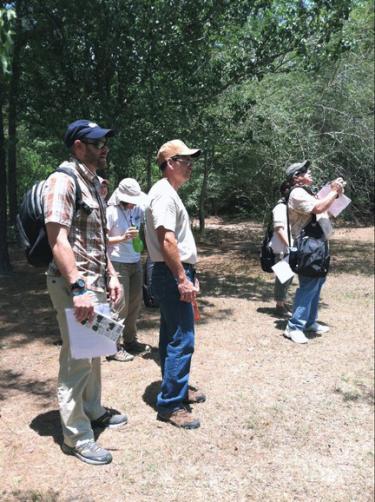Planning for Access
Whether you’ve decided on a small, private gathering or a larger event, you’ll need to do some planning and preparing. But don’t worry—this doesn’t have to be stressful or time-consuming. Follow this plan and you’ll feel confident—and calm!—on your walk in the woods:
Your Walk in the Woods Planning Schedule
Step 1: Create your guest list and send out invitations. (We suggest doing this 4-6 weeks in advance.)
- Your guests can include family and friends, neighbors, colleagues, local schools and Scout groups, church members, local business leaders or government officials, or fellow landowners.
- When you invite your guests, make sure to include all the details: who, what, when, where and why.
- Provide a list so your guests will know what to bring—for example, long pants, insect repellent, or a hat to protect them from the sun.
- Ask for an RSVP.
- Consider creating an information packet, particularly if you’re inviting school or community groups. It can include a map of the walk or a history of your property.
Step 2: Take stock of your resources.
- Pick out your route, and then consider if it needs any changes. How accessible is it? Will all visitors, young or old, be able to enjoy it? Are bathroom amenities and water stations available? Is parking available?
- Decide if you’ll be leading the walk, or if you’d prefer someone else to do it. If you’d like a professional (local educators and foresters are good options) to lead your walk, make sure you contact him or her several weeks in advance.
- Figure out the food. Will you host a picnic lunch catered by your family or a local restaurant? Or would you prefer visitors bring their own refreshments?
Step 3: Reach out.
- You may want some local support for your event. Consider seeking sponsors with whom you regularly do business to help offset the costs.
Point out the benefits they will enjoy: exposure to new customers, favorable publicity, etc.Remind your guests to bring their binoculars to help them spot wildlife in your forest.
- Consider contacting local nurseries for donations of seedlings or seed packets your guests can take home after their walk.
- If you’re hosting a large event or inviting high-profile guests (for example, business leaders or government officials), you may choose to involve the local media. Let your local newspaper, radio or TV station know what you’re planning and why it might interest their audience.
Step 4: Do a dress rehearsal. (We suggest doing this two weeks before your event.)
- Walk your route again, checking for hazards, obstacles, safety issues and distractions.
- Time the walk and schedule in regular rest stops.
- Follow up on your lunch arrangements, outreach efforts, etc., to make sure everything is in place.
Step 5: Enjoy your event!
- On the day of your walk, arrive early and do a last-minute check on the trail.
- If your event includes visitors who are not friends or family, ask your guests to sign in with their names, addresses, and emergency contact information. It's also useful to have them fill out and wear nametags.
- Remember to keep the day fun. Involve your visitors in friendly conversation, answer their questions in simple, non-technical language, and make frequent eye contact with everyone in the group.
As you can see, safety and accessibility come up more than once in this suggested planning schedule. Planning for safety is an important part of sharing your woods, and it takes only a few simple steps.
How can I get more tips?
It’s simple! Enter your email below.


